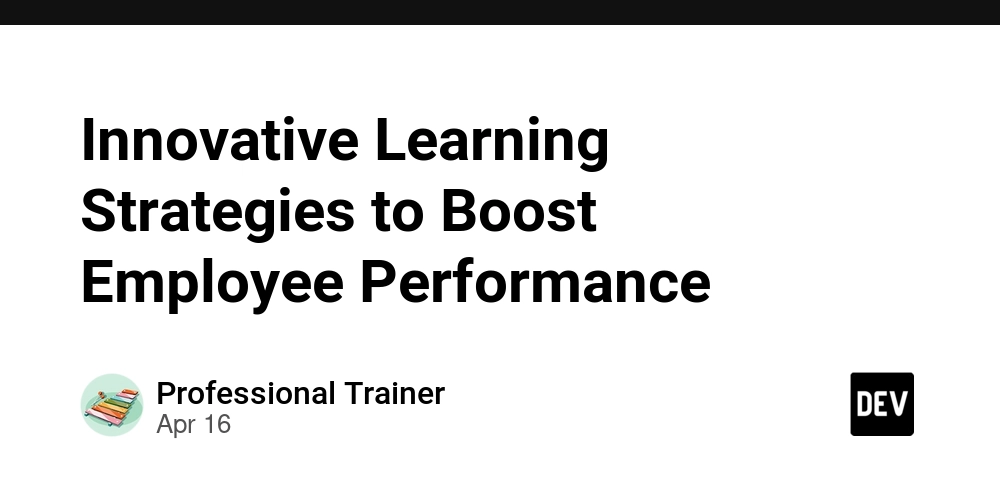The Impact of Code Review on Development Workflow: Balancing Quality and Speed
If you've ever waited days for a code review to be approved or felt like your review was just a rubber stamp, you know this process can either be a competitive advantage or a massive bottleneck in development. The challenge is finding the right balance: reviews that are too fast can compromise quality, while overly rigid reviews can slow down the team and delay deliveries. The key question is: how do high-performance teams manage this trade-off without sacrificing productivity and quality? In this article, we’ll explore the impact of code review on development workflow and how companies that scale their engineering teams effectively structure this process. Based on research and real-world cases, we’ll discuss what works, what gets in the way, and how AI is transforming this practice. Why Code Review is Essential (But Can Also Be a Problem) When done right, code review offers three main benefits: Fewer bugs in production – Studies show that a thorough review can catch up to 65% of defects in code, outperforming many testing approaches. Better maintainability and standardization – Reviewed code follows more consistent patterns, making the codebase easier to scale. Knowledge sharing – Developers learn from each other, preventing knowledge from being concentrated in a few key team members. However, the way code review is implemented can sometimes do more harm than good. Key challenges: Slow reviews delay deliveries – In large companies, 67% of developers wait more than a week for PR approvals, reducing productivity and impacting deadlines. Superficial reviews lower quality – In startups, PRs are often reviewed in minutes to keep up with the pace, but this can allow critical issues to slip through. Inefficient review workflows – Without automation and best practices, code reviews can become bottlenecks or bureaucratic processes that add little value. Let’s take a deeper look at these challenges. The Biggest Code Review Problem: Bureaucracy vs. Agility Despite its benefits, code review presents a major challenge: integrating it into the development workflow without hurting agility. In other words, the biggest problem is balancing the quality ensured by reviews with the pressure for speed in software development. Has this happened to your team? PRs stuck for days. Reviews taking so long that authors lose context. Or worse, rushed reviews that let bugs and bad decisions slip through. This is one of the most common (and frustrating) problems in development workflows. The longer a PR stays open, the greater the cost to the team: Quality drops – Superficial reviews let problems slip through, leading to costly technical debt later. Productivity plummets – Stalled PRs block other devs, disrupt delivery flow, and force the team to revisit forgotten code. Experts say the delay between submission and approval of a code review is one of the biggest sources of frustration. No one likes waiting days for feedback. And if the process becomes synonymous with slow bureaucracy, devs start avoiding reviews—or treat them as a mere formality. The result? A vicious cycle where code review, instead of ensuring quality, becomes a roadblock. Code Review: Cost or Investment? The Financial Impact on Productivity Code reviews are essential for maintaining quality, but they also come at a real cost—in developer hours and potential workflow delays. The big question: is the return worth the investment? 1. The real cost of code reviews Every hour spent on a code review is an hour that could be spent developing new features. And this time adds up fast: If each developer spends 5 hours a week reviewing code, that’s ~12.5% of total capacity. In a team of 10 developers, that’s 50 hours per week dedicated to code reviews. At an average cost of $150/hour (fully loaded), that’s a $7,500 weekly investment—or $30,000 per month—just on code reviews. In other words, code review time has a measurable financial impact on a team’s operational costs. But the real question isn’t how much it costs—it’s how much it saves. 2. Bug prevention: the return on investment The reason why big companies maintain code reviews isn’t because they love bureaucracy—it’s because it reduces rework and future costs. Studies show that every hour spent on review saves up to 33 hours of maintenance later. AT&T saw 90% fewer defects and a 14% increase in productivity after institutionalizing code inspections. Teams with effective reviews spend less time fixing production bugs and more time developing new features. So yes, code review takes time—but not doing it costs even more. 3. The hidden danger: stalled PRs and impact on productivity The flip side: if the process is slow, it becomes a bottleneck. In some companies, devs lose up to 2 days per week waiting for reviews. Meta (Facebook) analyzed internal data and found that slow reviews decrease engineer satisfaction and pro

If you've ever waited days for a code review to be approved or felt like your review was just a rubber stamp, you know this process can either be a competitive advantage or a massive bottleneck in development. The challenge is finding the right balance: reviews that are too fast can compromise quality, while overly rigid reviews can slow down the team and delay deliveries. The key question is: how do high-performance teams manage this trade-off without sacrificing productivity and quality?
In this article, we’ll explore the impact of code review on development workflow and how companies that scale their engineering teams effectively structure this process. Based on research and real-world cases, we’ll discuss what works, what gets in the way, and how AI is transforming this practice.
Why Code Review is Essential (But Can Also Be a Problem)
When done right, code review offers three main benefits:
- Fewer bugs in production – Studies show that a thorough review can catch up to 65% of defects in code, outperforming many testing approaches.
- Better maintainability and standardization – Reviewed code follows more consistent patterns, making the codebase easier to scale.
- Knowledge sharing – Developers learn from each other, preventing knowledge from being concentrated in a few key team members.
However, the way code review is implemented can sometimes do more harm than good.
Key challenges:
- Slow reviews delay deliveries – In large companies, 67% of developers wait more than a week for PR approvals, reducing productivity and impacting deadlines.
- Superficial reviews lower quality – In startups, PRs are often reviewed in minutes to keep up with the pace, but this can allow critical issues to slip through.
- Inefficient review workflows – Without automation and best practices, code reviews can become bottlenecks or bureaucratic processes that add little value.
Let’s take a deeper look at these challenges.
The Biggest Code Review Problem: Bureaucracy vs. Agility
Despite its benefits, code review presents a major challenge: integrating it into the development workflow without hurting agility. In other words, the biggest problem is balancing the quality ensured by reviews with the pressure for speed in software development.
Has this happened to your team? PRs stuck for days. Reviews taking so long that authors lose context. Or worse, rushed reviews that let bugs and bad decisions slip through.
This is one of the most common (and frustrating) problems in development workflows. The longer a PR stays open, the greater the cost to the team:
- Quality drops – Superficial reviews let problems slip through, leading to costly technical debt later.
- Productivity plummets – Stalled PRs block other devs, disrupt delivery flow, and force the team to revisit forgotten code.
Experts say the delay between submission and approval of a code review is one of the biggest sources of frustration. No one likes waiting days for feedback. And if the process becomes synonymous with slow bureaucracy, devs start avoiding reviews—or treat them as a mere formality.
The result? A vicious cycle where code review, instead of ensuring quality, becomes a roadblock.
Code Review: Cost or Investment? The Financial Impact on Productivity
Code reviews are essential for maintaining quality, but they also come at a real cost—in developer hours and potential workflow delays. The big question: is the return worth the investment?
1. The real cost of code reviews
Every hour spent on a code review is an hour that could be spent developing new features. And this time adds up fast:
- If each developer spends 5 hours a week reviewing code, that’s ~12.5% of total capacity.
- In a team of 10 developers, that’s 50 hours per week dedicated to code reviews.
- At an average cost of $150/hour (fully loaded), that’s a $7,500 weekly investment—or $30,000 per month—just on code reviews.
In other words, code review time has a measurable financial impact on a team’s operational costs. But the real question isn’t how much it costs—it’s how much it saves.
2. Bug prevention: the return on investment
The reason why big companies maintain code reviews isn’t because they love bureaucracy—it’s because it reduces rework and future costs.
- Studies show that every hour spent on review saves up to 33 hours of maintenance later.
- AT&T saw 90% fewer defects and a 14% increase in productivity after institutionalizing code inspections.
- Teams with effective reviews spend less time fixing production bugs and more time developing new features.
So yes, code review takes time—but not doing it costs even more.
3. The hidden danger: stalled PRs and impact on productivity
The flip side: if the process is slow, it becomes a bottleneck.
- In some companies, devs lose up to 2 days per week waiting for reviews.
- Meta (Facebook) analyzed internal data and found that slow reviews decrease engineer satisfaction and productivity.
- When they reduced review wait times, team productivity and morale improved.
The key is to find the balance between quality and speed.
4. Well-executed code reviews improve development ROI
At the end of the day, code review is a strategic investment:
- Prevents expensive failures that could harm the business.
- Speeds up the team’s learning curve (reviewers learn too).
- Reduces technical debt and improves code maintainability.
That’s why many companies treat code review as a fixed cost in development, just like automated testing. After all, the cost of not reviewing (critical bugs, rework, production failures) is always higher.
Real-World Examples of Code Review Optimization (and the Financial Impact)
1. Meta (Facebook) – Speeding Up Reviews Without Losing Quality
Meta realized that slow reviews were blocking productivity and making developers less satisfied. To fix this, they:
- Tracked metrics like "P75 Time In Review" (how long the slowest 25% of PRs waited for review).
- Built notification and prioritization systems to ensure urgent PRs reached the right reviewers quickly.
- Used "Eyeball Time" to measure the actual time a reviewer spent analyzing code, preventing superficial approvals.







































































































































































![[The AI Show Episode 144]: ChatGPT’s New Memory, Shopify CEO’s Leaked “AI First” Memo, Google Cloud Next Releases, o3 and o4-mini Coming Soon & Llama 4’s Rocky Launch](https://www.marketingaiinstitute.com/hubfs/ep%20144%20cover.png)




































































































































































































![Blue Archive tier list [April 2025]](https://media.pocketgamer.com/artwork/na-33404-1636469504/blue-archive-screenshot-2.jpg?#)


































.png?#)


































.webp?#)




























































































![[Update: Optional] Google rolling out auto-restart security feature to Android](https://i0.wp.com/9to5google.com/wp-content/uploads/sites/4/2025/01/google-play-services-2.jpg?resize=1200%2C628&quality=82&strip=all&ssl=1)

















![Apple to Split Enterprise and Western Europe Roles as VP Exits [Report]](https://www.iclarified.com/images/news/97032/97032/97032-640.jpg)
![Nanoleaf Announces New Pegboard Desk Dock With Dual-Sided Lighting [Video]](https://www.iclarified.com/images/news/97030/97030/97030-640.jpg)










































![Security Database Used by Apple Goes Independent After Funding Cut [Updated]](https://images.macrumors.com/t/FWFeAmxnHKf7vkk_MCBh9TcNMVg=/1600x/article-new/2023/05/bug-security-vulnerability-issue-fix-larry.jpg)


























































































